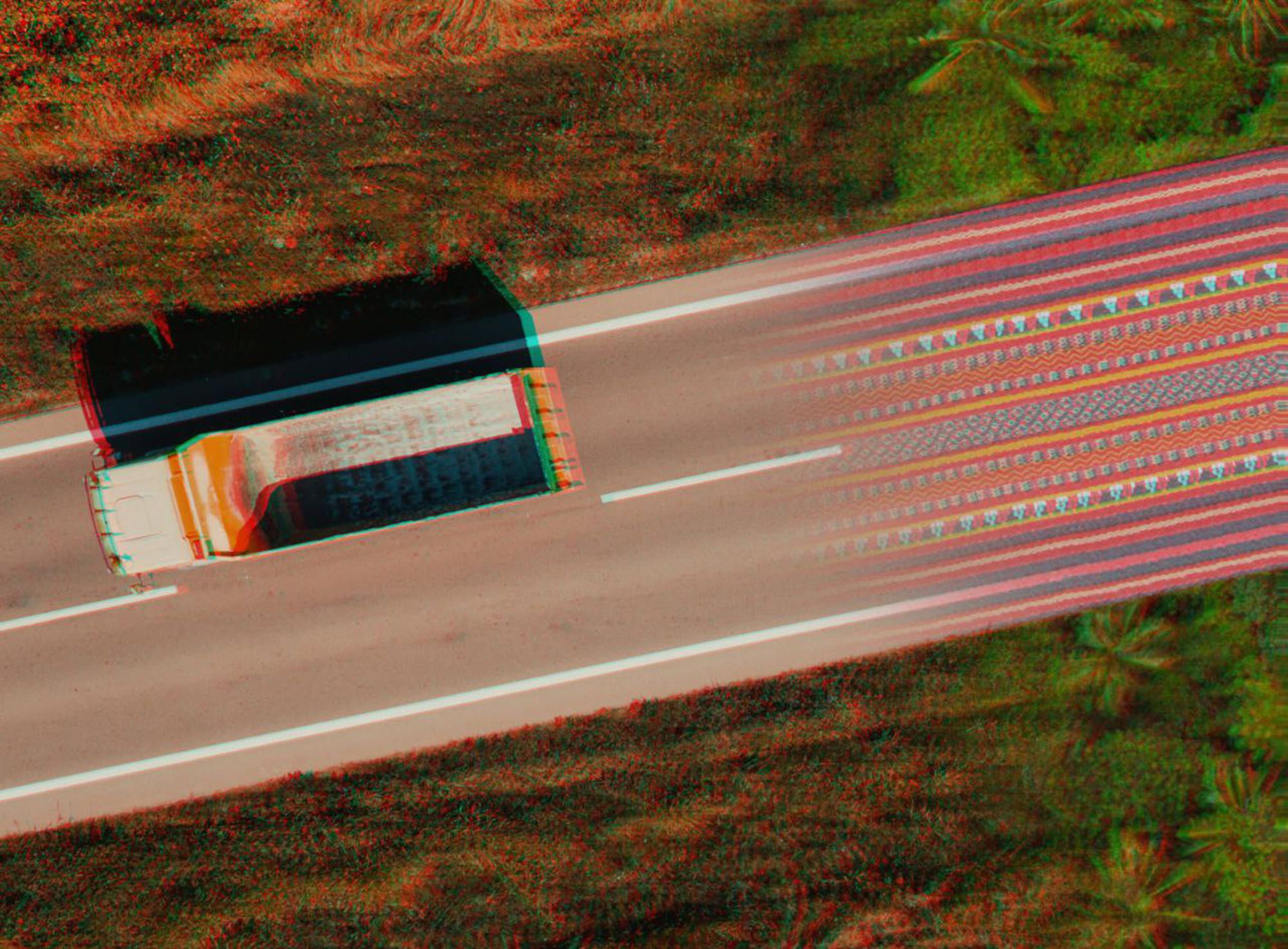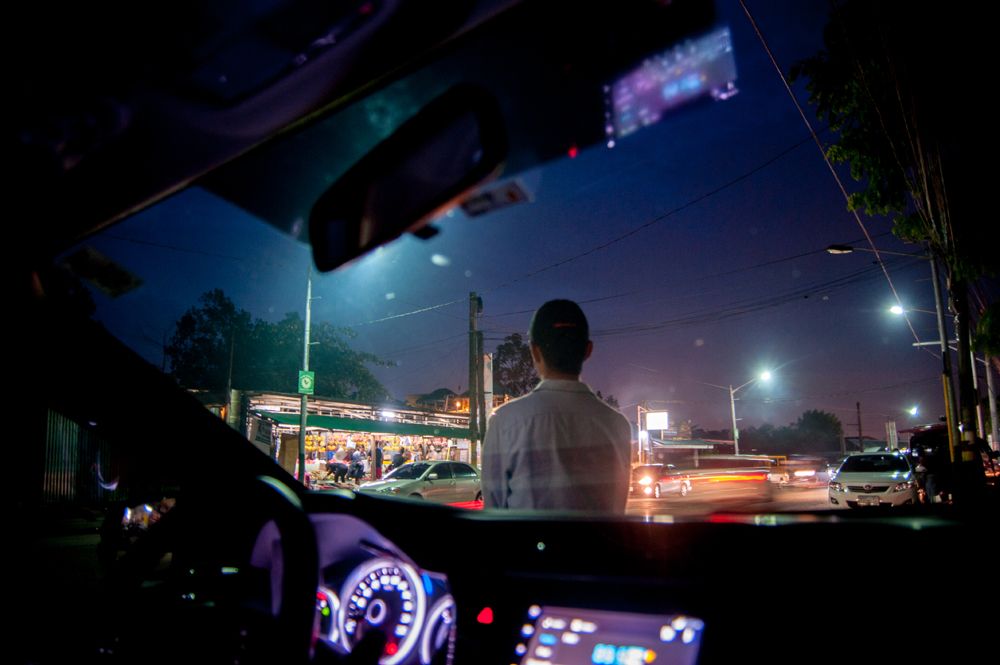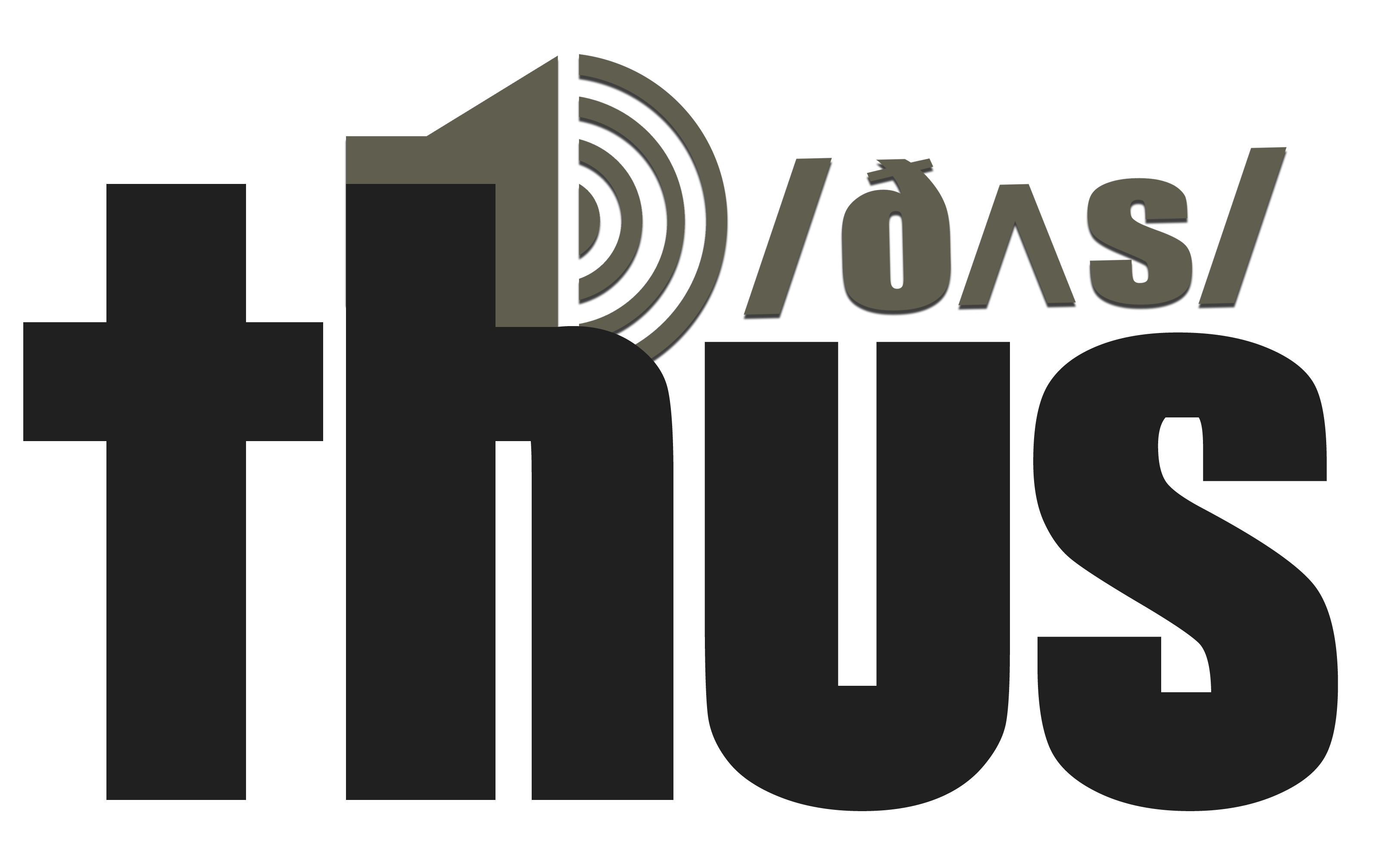![[object Object]](https://admin.thus.ph/uploads/office_horror_5ac5045079.jpg)
On the Edge While On the Job: My Workplace Horror Stories
From coffins that seem to follow cars to keyboards that seem to type on their own.

Maya Cabuang
2024-10-31T10:56:29.308Z
They say every office has its secrets. But after 20 years of me navigating the corporate landscape, I’ve discovered some secrets that don’t come with non-disclosure agreements. Why bother? After all, people may find them hard to believe when they do end up getting disclosed.
I’ve gathered a few of those over the years. They’re not the kind that would soil a company’s name directly. But, like how some of those secrets can be, the ones I’ve encountered can also send chills down the spine.
Imagine a late night with only the soft hum of servers breaking the silence. As you review the latest metrics, a sudden chill would overtake you, and a shadow would slip just out of view.
What was that? How did that happen? Am I not alone?
This is a crucial ingredient of a good horror story. It gives you just enough facts to ask questions that normally go unanswered. They incite fear by bringing you closer to the unknown.
I’ve been there several times. And, in some cases, it happened while I was on the job—when I already had no shortage of reasons to be afraid.
The Mystery of Biringan: Where Packages Go to Disappear
As a former member of the enterprise operations team at a leading global tech company most known for their cellphones, I’ve had my fair share of peculiar experiences,. But, one case stands out like an apparition in the night—a logistics conundrum that felt more like a plot twist from a mystery novel.
I can still vividly recall the order fulfillment requests we would receive, each one detailing items marked for delivery to a well-known yet mysterious place called Biringan.
Biringan is a name that has become synonymous with the mythical and unexplained, a local Atlantis town that locals say vanishes from maps, and maybe that’s why our items always seemed to join the ranks of the unknown as soon as they arrived at the closest Samar postal stop.
Now, let me set the scene: a bustling operations room, where the keyboards are clattering like a percussion section in a symphony. My colleagues and I would scan through the requests, making sure logistics was smooth and efficient. We would coordinate deliveries as per the standard protocol—everything well-documented and paid for, with addresses checked twice.
But then, there would come the requests for Biringan.
Each time we initiated these deliveries, I felt a flutter of trepidation mixed with intrigue. With every item sent—be it a snazzy cord, a spare part, or some outdated accessory—I could only wonder what fate awaited them in that peculiar destination.
We would follow the script. The packages would leave our warehouse with all the approvals and assurances of timely arrival, delivered to the nearest postal stop—and yet, it’s as if a black hole would open up in that post office. The tracking numbers would blink into oblivion, and the packages would simply vanish without a trace. The items would always come fully paid for, would safely reach the postal office in Samar then disappear within the postal premises.
Postal ledgers documented that the deliveries were received at the postal office then delivered to the recipient successfully. However, the delivery person was always unknown. This happened often. No reports of loss; no complaints were received.
It became the talk of the team. We scoured for reasons. Was there a postal employee whose side hustle involved pilfering our fully paid packages? Or perhaps there was a secret society of tech enthusiasts who were adept at diverting parcels through some ancient skill of misdirection? The jokes flew, but in the back of my mind, I couldn’t shake off the quiet dread that none of us had clear answers.
Here we were, having received full payment for the delivery, following every protocol, and still, the packages evaded capture. I’d like to think there’s a secret tunnel connecting Samar and some alternate universe, where our logistics teams have been unwittingly feeding into a realm of untold possibilities.
Chasing Coffins in Southern Luzon
As a member of the sales team at a leading fast-moving consumer goods business (best known for their food, beauty and homecare products,) I’ve had my fair share of unique experiences.
I tackled complex negotiations, closed hard deals, and even navigated the intricacies of market trends. But none of that prepared me for the spine-tingling adventures that waited for me at my evening deployments in the far-flung areas of Southern Luzon.
With the sun dipping below the horizon, casting an orange glow across the lush greenery of a remote province, my colleagues warned me—seasoned veterans of the field speaking in hushed tones about local legends surrounding the roads I was meant to travel. With a mischievous grin, one senior team member said, “if you see a coffin in the middle of the road, just drive around it. But don’t get too comfortable. When it starts following you, just keep calm and keep driving.”
At first, I chuckled at the idea, thinking it was just local lore intended to spice up an otherwise mundane work trip through provincial life. After all, how could a coffin follow me?
I drove through winding roads, flanked by towering palm trees that rustled in the night breeze. It was on one of these stretches, as the shadows of dusk turned pitch black, that I saw it—a simple wooden coffin in the middle of the road.
I felt a jolt of adrenaline shoot through me. It was just me and a coffin with no other cars ahead or behind me. My heart raced as I slowed my vehicle and carefully maneuvered around the ominous sight, all while trying to suppress the instinct to scream like a character in a horror movie.
But here’s the twist: I wasn’t really afraid of the coffin itself. The thought of it “following” me was nothing compared to the anxiety bubbling beneath the surface—the fear of missing my sales quotas and the very real possibility of losing my well-coveted job. With sales targets looming like specters over my head, that coffin felt more like a distracting nuisance than a true threat.
As I continued driving, my focus shifted from avoiding ghoulish encounters to securing those crucial sales. With the ghost of the coffin trailing behind me, I honed in on what mattered most: converting leads into sales.
Pulling into a small barangay, I met locals who were more interested in the latest products than in the supernatural. Between product samples and laughter, my worries about imaginary hauntings dissipated, replaced by the thrill of making connections and building rapport.
The next day, as I attended a virtual monthly meeting by our health, welfare and safety team, the atmosphere was lighthearted—until it took a bizarre turn when it was reported that two company cars had been damaged due to “moving coffins.”
My heart sank as I listened, half-believing what I heard and realizing that perhaps there was more truth to those local legends than I had dared to consider.
Typing in the Dark: My Haunting Evenings in Makati
As a marketing representative for a well-known pink beauty brand, I was dedicated to my craft, often working late into the evening to connect with clients and fine-tune my presentations.
Work-life balance was well-imposed in our workplace; most employees clocked out by 5pm. As a new hire though, there was much for me to catch up on and grinding it out was imperative in order to produce the desired results.
Little did I know that this would lead to an undesirable scenario.
It was a typical evening, past 7pm, and the rhythm of the office was slowly fading into silence. I loved the quiet that point in time brought, allowing me to focus without interruption. But this tranquility came with an unsettling twist.
As the clock ticked away, I began to hear something odd—a series of soft, precise clicking noises that cut through the silence. Confused, I glanced up from my work cubicle, peering into the dimly lit corners of the floor. Was someone else still there?
Curiosity piqued; I ventured down the hallway, my heart racing a little faster with each step, half-expecting to see a co-worker hunched over a keyboard in an empty office floor. Instead, the corridor was as empty as my growing sense of unease. The offices flanking the hallway remained dark, their windows reflecting the ghostly glow of the office lights. And then it happened again—a quiet but distinct tapping of a keyboard echoing from an empty cubicle.
Worry washed over me, and I surrendered to my instinct to call security. They arrived, looking around the now eerily quiet office, and I felt a mix of relief and apprehension. Surely, I couldn’t be the only one experiencing this.
Just as we gathered, the keyboard clicking resumed, loud and clear. The guards exchanged nervous glances; their bravado somewhat deflated. The sounds seemed to dance around us, navigating the office like an unseen force. Suddenly, the door to one of the offices creaked open. A jarring sound that sent chills down my spine. I could feel the guards tense beside me as we collectively strained to comprehend the impossible.
“Excuse me, is there someone here?” one guard called out, the boldness in his voice thinly veiling his trepidation. But there was no response, just more clicks—and then the doors began to open and shut on their own, as if whatever was behind them was playing a macabre game of peek-a-boo. Each click and slam resonated in the silence, as if the very heartbeat of the building was echoing back at us.
At that moment, my mind raced through memories of urban legends and ghost stories—tales of restless spirits lingering in old buildings lining Makati Avenue, the concept of an unfinished business keeping them tethered to the world of the living. There we were, three terrified souls in the face of an unseen entity, trapped in a never-ending loop of clicks and slams.
“Please Ma’am, may we leave?” a guard finally murmured, breaking the spell that had wrapped around us. As we retreated and I clocked out, I couldn’t shake the feeling that I was being watched—or worse, that something unseen was now following us.
Once outside, the night air enveloped me, offering a brief reprieve from the tension that had engulfed the office. As I took deep breaths to calm my racing heart, I glanced back at the old building. The illuminated windows seemed to twinkle with life, but I knew better. Behind those glass panes, something—or someone—was still hard at work, typing away in the dark. From that evening on, my late nights in the office became a thing of the past.
The following day, I received shocking news: one guard had requested a reassignment after our terrifying encounter. My stomach dropped as I learned that the other guard had reviewed the CCTV footage, and his face paled as he recounted what he had seen. Even after we left, the office chairs had begun zooming across the cubicles on their own, gliding and spinning with an unsettling energy that confirmed my worst fears.
Perhaps I really wasn't alone that night.
Cheerful Ghosts of Paco Avenue
It started innocently enough; I would often catch a glimpse of a group of construction workers who seemed to be walking home just beyond the busy intersection.
At first, they appeared as any other group of end-of-day laborers, chatting animatedly and laughing as they made their way down the street. I could hear their cheerful voices carrying over the sound of honking horns and bustling pedestrians. It brought a sense of normalcy to my otherwise mundane workday.
One evening, as the fluorescent lights of our unit flickered in sync with my growing unease, I decided to take a closer look. As I peered through the window, the blood drained from my face. The apparent construction workers seemed to have no legs. Instead, they floated a few inches above the ground, gliding effortlessly down the pavement as if propelled by some invisible force.
I blinked rapidly, convinced that my eyes were playing tricks on me. Surely, one too many late shifts had warped my senses. I grabbed a colleague, who was hunched over a computer, and dragged them to the window. “Look! Those guys… do you see them?” I urged, my voice barely above a whisper.
My colleague squinted into the growing darkness, and their expression twisted from confusion to terror as they confirmed what I saw. What should have been a sight of camaraderie turned into a spectral parade of floating figures, cheerful yet utterly disconcerting. The more I watched them, the more I felt my spine tingling. I could see details in their faces—the joyful smiles of their spirited conversations. But the apparent absence of legs, the way they nonchalantly floated in mid-air, was nothing short of macabre. It was as if they were happily trapped in some limbo, emerging every twilight.
One night, fueled by morbid curiosity, I mustered the courage to step out and follow them, convinced that discovering their origin would put my mind at ease. Their voices grew louder, and my heart raced with fear as I locked my gaze on them. But just as I reached out, a dark shadow enveloped me, and the cheerful construction workers turned into a blur, vanishing into the mist like they had never existed at all.
I returned to the office premises, the company security guards looked on fairly amused, proclaiming that I was not the first to attempt to see if those workers were real.
The Haunting Fog of Tagaytay
I’ve always loved the cool, crisp air of Tagaytay, with its stunning views of the Taal Volcano and the vibrant greenery; it’s a refreshing escape from the bustle of urban life. That charm, however, took on a sinister twist one fateful afternoon.
My co-workers and I set out for a sales trip, 5 of us crammed into a company car, chatting and laughing as we cruised down the winding roads. Suddenly, the weather shifted with eerie rapidity; thick, swirling fog enveloped us, turning sunlight into an ominous glow. When I glanced out the window, visibility shrank to mere feet. The road twisted ahead, leading us into the encroaching grayness, and the mood in the car changed instantly.
This is normal for Tagaytay, right?
“What kind of fog is this?” I asked, trying to sound nonchalant, though a knot twisted in my stomach. My teammates exchanged nervous glances, their unease palpable. “We hope it’s not ‘that’ kind” one of them muttered, a hint of fear creeping into their voice. My heart raced as dread settled in: what did that even mean?
As our drive stretched on for what felt like an eternity—each minute dragging like a lifetime—I became acutely aware of the oppressive silence outside. No houses, no other cars, no signs of life lined the desolate road of what we knew was a busy main avenue. The disconcerting absence of the familiar tinged the air with a sense of foreboding. Our cellphones had lost signal, and the radio stations turned to static. After 30 minutes of driving down a path that should have taken us only 10, we finally reached a breaking point.
“Stop the car,” someone finally urged. My pulse quickened as we parked, engulfed by the ghostly shroud. We all sat there in chilling silence, the vehicle filled with unsaid fears. A collective decision emerged as we held hands and offered a desperate prayer.
The tension in the car gradually loosened later on, and reluctantly, we decided to attempt moving again. As if a great force had lifted a veil, the fog began to dissipate, revealing familiar sights.
But where were we? Instead of inching forward toward our destination, we found ourselves back at the beginning of the very path we had just taken. My throat closed in disbelief. We stared out of the windows, hearts racing again, realizing that we were no longer on our way to our destination but had somehow returned to where this haunted journey began.
“What just happened?” a colleague whispered, their voice trembling. Fear rippled through the vehicle as we collectively glimpsed the reality we no longer wanted to acknowledge: Tagaytay had played us like puppets on strings, leading us into a fog that warped space and time.
Fear of the Known
In the realm of data-driven decisions, where everything has a logical purpose and every outcome a measurable cause, it becomes unsettling to face experiences that elude explanation.
Perhaps these scenarios were just products of stress, exhaustion and an overactive imagination. Perhaps these seemingly paranormal experiences had explanations that fell within the realm of normalcy. But perceptions exist because they stand on something that’s true. And in this country consistently led astray by perceptions, sometimes the truth can be even more terrifying than an presence in a horror story.
I’ve gathered a few of those over the years. They’re not the kind that would soil a company’s name directly. But, like how some of those secrets can be, the ones I’ve encountered can also send chills down the spine.
Imagine a late night with only the soft hum of servers breaking the silence. As you review the latest metrics, a sudden chill would overtake you, and a shadow would slip just out of view.
What was that? How did that happen? Am I not alone?
This is a crucial ingredient of a good horror story. It gives you just enough facts to ask questions that normally go unanswered. They incite fear by bringing you closer to the unknown.
I’ve been there several times. And, in some cases, it happened while I was on the job—when I already had no shortage of reasons to be afraid.
The Mystery of Biringan: Where Packages Go to Disappear
As a former member of the enterprise operations team at a leading global tech company most known for their cellphones, I’ve had my fair share of peculiar experiences,. But, one case stands out like an apparition in the night—a logistics conundrum that felt more like a plot twist from a mystery novel.
I can still vividly recall the order fulfillment requests we would receive, each one detailing items marked for delivery to a well-known yet mysterious place called Biringan.
Biringan is a name that has become synonymous with the mythical and unexplained, a local Atlantis town that locals say vanishes from maps, and maybe that’s why our items always seemed to join the ranks of the unknown as soon as they arrived at the closest Samar postal stop.
Now, let me set the scene: a bustling operations room, where the keyboards are clattering like a percussion section in a symphony. My colleagues and I would scan through the requests, making sure logistics was smooth and efficient. We would coordinate deliveries as per the standard protocol—everything well-documented and paid for, with addresses checked twice.
But then, there would come the requests for Biringan.
Each time we initiated these deliveries, I felt a flutter of trepidation mixed with intrigue. With every item sent—be it a snazzy cord, a spare part, or some outdated accessory—I could only wonder what fate awaited them in that peculiar destination.
We would follow the script. The packages would leave our warehouse with all the approvals and assurances of timely arrival, delivered to the nearest postal stop—and yet, it’s as if a black hole would open up in that post office. The tracking numbers would blink into oblivion, and the packages would simply vanish without a trace. The items would always come fully paid for, would safely reach the postal office in Samar then disappear within the postal premises.
Postal ledgers documented that the deliveries were received at the postal office then delivered to the recipient successfully. However, the delivery person was always unknown. This happened often. No reports of loss; no complaints were received.
It became the talk of the team. We scoured for reasons. Was there a postal employee whose side hustle involved pilfering our fully paid packages? Or perhaps there was a secret society of tech enthusiasts who were adept at diverting parcels through some ancient skill of misdirection? The jokes flew, but in the back of my mind, I couldn’t shake off the quiet dread that none of us had clear answers.
Here we were, having received full payment for the delivery, following every protocol, and still, the packages evaded capture. I’d like to think there’s a secret tunnel connecting Samar and some alternate universe, where our logistics teams have been unwittingly feeding into a realm of untold possibilities.
Chasing Coffins in Southern Luzon
As a member of the sales team at a leading fast-moving consumer goods business (best known for their food, beauty and homecare products,) I’ve had my fair share of unique experiences.
I tackled complex negotiations, closed hard deals, and even navigated the intricacies of market trends. But none of that prepared me for the spine-tingling adventures that waited for me at my evening deployments in the far-flung areas of Southern Luzon.
With the sun dipping below the horizon, casting an orange glow across the lush greenery of a remote province, my colleagues warned me—seasoned veterans of the field speaking in hushed tones about local legends surrounding the roads I was meant to travel. With a mischievous grin, one senior team member said, “if you see a coffin in the middle of the road, just drive around it. But don’t get too comfortable. When it starts following you, just keep calm and keep driving.”
At first, I chuckled at the idea, thinking it was just local lore intended to spice up an otherwise mundane work trip through provincial life. After all, how could a coffin follow me?
I drove through winding roads, flanked by towering palm trees that rustled in the night breeze. It was on one of these stretches, as the shadows of dusk turned pitch black, that I saw it—a simple wooden coffin in the middle of the road.
I felt a jolt of adrenaline shoot through me. It was just me and a coffin with no other cars ahead or behind me. My heart raced as I slowed my vehicle and carefully maneuvered around the ominous sight, all while trying to suppress the instinct to scream like a character in a horror movie.
But here’s the twist: I wasn’t really afraid of the coffin itself. The thought of it “following” me was nothing compared to the anxiety bubbling beneath the surface—the fear of missing my sales quotas and the very real possibility of losing my well-coveted job. With sales targets looming like specters over my head, that coffin felt more like a distracting nuisance than a true threat.
As I continued driving, my focus shifted from avoiding ghoulish encounters to securing those crucial sales. With the ghost of the coffin trailing behind me, I honed in on what mattered most: converting leads into sales.
Pulling into a small barangay, I met locals who were more interested in the latest products than in the supernatural. Between product samples and laughter, my worries about imaginary hauntings dissipated, replaced by the thrill of making connections and building rapport.
The next day, as I attended a virtual monthly meeting by our health, welfare and safety team, the atmosphere was lighthearted—until it took a bizarre turn when it was reported that two company cars had been damaged due to “moving coffins.”
My heart sank as I listened, half-believing what I heard and realizing that perhaps there was more truth to those local legends than I had dared to consider.
Typing in the Dark: My Haunting Evenings in Makati
As a marketing representative for a well-known pink beauty brand, I was dedicated to my craft, often working late into the evening to connect with clients and fine-tune my presentations.
Work-life balance was well-imposed in our workplace; most employees clocked out by 5pm. As a new hire though, there was much for me to catch up on and grinding it out was imperative in order to produce the desired results.
Little did I know that this would lead to an undesirable scenario.
It was a typical evening, past 7pm, and the rhythm of the office was slowly fading into silence. I loved the quiet that point in time brought, allowing me to focus without interruption. But this tranquility came with an unsettling twist.
As the clock ticked away, I began to hear something odd—a series of soft, precise clicking noises that cut through the silence. Confused, I glanced up from my work cubicle, peering into the dimly lit corners of the floor. Was someone else still there?
Curiosity piqued; I ventured down the hallway, my heart racing a little faster with each step, half-expecting to see a co-worker hunched over a keyboard in an empty office floor. Instead, the corridor was as empty as my growing sense of unease. The offices flanking the hallway remained dark, their windows reflecting the ghostly glow of the office lights. And then it happened again—a quiet but distinct tapping of a keyboard echoing from an empty cubicle.
Worry washed over me, and I surrendered to my instinct to call security. They arrived, looking around the now eerily quiet office, and I felt a mix of relief and apprehension. Surely, I couldn’t be the only one experiencing this.
Just as we gathered, the keyboard clicking resumed, loud and clear. The guards exchanged nervous glances; their bravado somewhat deflated. The sounds seemed to dance around us, navigating the office like an unseen force. Suddenly, the door to one of the offices creaked open. A jarring sound that sent chills down my spine. I could feel the guards tense beside me as we collectively strained to comprehend the impossible.
“Excuse me, is there someone here?” one guard called out, the boldness in his voice thinly veiling his trepidation. But there was no response, just more clicks—and then the doors began to open and shut on their own, as if whatever was behind them was playing a macabre game of peek-a-boo. Each click and slam resonated in the silence, as if the very heartbeat of the building was echoing back at us.
At that moment, my mind raced through memories of urban legends and ghost stories—tales of restless spirits lingering in old buildings lining Makati Avenue, the concept of an unfinished business keeping them tethered to the world of the living. There we were, three terrified souls in the face of an unseen entity, trapped in a never-ending loop of clicks and slams.
“Please Ma’am, may we leave?” a guard finally murmured, breaking the spell that had wrapped around us. As we retreated and I clocked out, I couldn’t shake the feeling that I was being watched—or worse, that something unseen was now following us.
Once outside, the night air enveloped me, offering a brief reprieve from the tension that had engulfed the office. As I took deep breaths to calm my racing heart, I glanced back at the old building. The illuminated windows seemed to twinkle with life, but I knew better. Behind those glass panes, something—or someone—was still hard at work, typing away in the dark. From that evening on, my late nights in the office became a thing of the past.
The following day, I received shocking news: one guard had requested a reassignment after our terrifying encounter. My stomach dropped as I learned that the other guard had reviewed the CCTV footage, and his face paled as he recounted what he had seen. Even after we left, the office chairs had begun zooming across the cubicles on their own, gliding and spinning with an unsettling energy that confirmed my worst fears.
Perhaps I really wasn't alone that night.
Cheerful Ghosts of Paco Avenue
It started innocently enough; I would often catch a glimpse of a group of construction workers who seemed to be walking home just beyond the busy intersection.
At first, they appeared as any other group of end-of-day laborers, chatting animatedly and laughing as they made their way down the street. I could hear their cheerful voices carrying over the sound of honking horns and bustling pedestrians. It brought a sense of normalcy to my otherwise mundane workday.
One evening, as the fluorescent lights of our unit flickered in sync with my growing unease, I decided to take a closer look. As I peered through the window, the blood drained from my face. The apparent construction workers seemed to have no legs. Instead, they floated a few inches above the ground, gliding effortlessly down the pavement as if propelled by some invisible force.
I blinked rapidly, convinced that my eyes were playing tricks on me. Surely, one too many late shifts had warped my senses. I grabbed a colleague, who was hunched over a computer, and dragged them to the window. “Look! Those guys… do you see them?” I urged, my voice barely above a whisper.
My colleague squinted into the growing darkness, and their expression twisted from confusion to terror as they confirmed what I saw. What should have been a sight of camaraderie turned into a spectral parade of floating figures, cheerful yet utterly disconcerting. The more I watched them, the more I felt my spine tingling. I could see details in their faces—the joyful smiles of their spirited conversations. But the apparent absence of legs, the way they nonchalantly floated in mid-air, was nothing short of macabre. It was as if they were happily trapped in some limbo, emerging every twilight.
One night, fueled by morbid curiosity, I mustered the courage to step out and follow them, convinced that discovering their origin would put my mind at ease. Their voices grew louder, and my heart raced with fear as I locked my gaze on them. But just as I reached out, a dark shadow enveloped me, and the cheerful construction workers turned into a blur, vanishing into the mist like they had never existed at all.
I returned to the office premises, the company security guards looked on fairly amused, proclaiming that I was not the first to attempt to see if those workers were real.
The Haunting Fog of Tagaytay
I’ve always loved the cool, crisp air of Tagaytay, with its stunning views of the Taal Volcano and the vibrant greenery; it’s a refreshing escape from the bustle of urban life. That charm, however, took on a sinister twist one fateful afternoon.
My co-workers and I set out for a sales trip, 5 of us crammed into a company car, chatting and laughing as we cruised down the winding roads. Suddenly, the weather shifted with eerie rapidity; thick, swirling fog enveloped us, turning sunlight into an ominous glow. When I glanced out the window, visibility shrank to mere feet. The road twisted ahead, leading us into the encroaching grayness, and the mood in the car changed instantly.
This is normal for Tagaytay, right?
“What kind of fog is this?” I asked, trying to sound nonchalant, though a knot twisted in my stomach. My teammates exchanged nervous glances, their unease palpable. “We hope it’s not ‘that’ kind” one of them muttered, a hint of fear creeping into their voice. My heart raced as dread settled in: what did that even mean?
As our drive stretched on for what felt like an eternity—each minute dragging like a lifetime—I became acutely aware of the oppressive silence outside. No houses, no other cars, no signs of life lined the desolate road of what we knew was a busy main avenue. The disconcerting absence of the familiar tinged the air with a sense of foreboding. Our cellphones had lost signal, and the radio stations turned to static. After 30 minutes of driving down a path that should have taken us only 10, we finally reached a breaking point.
“Stop the car,” someone finally urged. My pulse quickened as we parked, engulfed by the ghostly shroud. We all sat there in chilling silence, the vehicle filled with unsaid fears. A collective decision emerged as we held hands and offered a desperate prayer.
The tension in the car gradually loosened later on, and reluctantly, we decided to attempt moving again. As if a great force had lifted a veil, the fog began to dissipate, revealing familiar sights.
But where were we? Instead of inching forward toward our destination, we found ourselves back at the beginning of the very path we had just taken. My throat closed in disbelief. We stared out of the windows, hearts racing again, realizing that we were no longer on our way to our destination but had somehow returned to where this haunted journey began.
“What just happened?” a colleague whispered, their voice trembling. Fear rippled through the vehicle as we collectively glimpsed the reality we no longer wanted to acknowledge: Tagaytay had played us like puppets on strings, leading us into a fog that warped space and time.
Fear of the Known
In the realm of data-driven decisions, where everything has a logical purpose and every outcome a measurable cause, it becomes unsettling to face experiences that elude explanation.
Perhaps these scenarios were just products of stress, exhaustion and an overactive imagination. Perhaps these seemingly paranormal experiences had explanations that fell within the realm of normalcy. But perceptions exist because they stand on something that’s true. And in this country consistently led astray by perceptions, sometimes the truth can be even more terrifying than an presence in a horror story.
Recommended

Why Labor Agitation Resumes Operation
Allen Gumiran

The Work of Comedy In The Age of Soyjaks and Tiktok Vids
Allen Gumiran

Thank You, Ma. You Did Everything But I Realized You Needed Help
Corin B. Arenas

Paracelis Goes to Baguio
Quintin Pastrana

Some Truths That Will Set Filipinos Free
Allen Gumiran

The Road Warrior
Edmark Tan

“SCI-FI: Mythologies Transformed" by Women
Thus

How Powerful is the President Really?
Allen Gumiran
